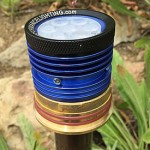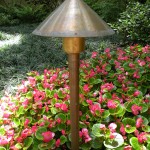04 Sep Low Voltage Landscape Lighting Costs and other Common questions
By Mike Gambino
If you’re considering a low voltage landscape lighting system today, you are also probably considering installing an LED low voltage landscape lighting system. As we work with hundreds of people throughout Los Angeles, Ventura and Santa Barbara counties and beyond each year we have the opportunity to answer tons of questions about landscape lighting. In this article, we’re going to tackle some of the most popular Low voltage landscape lighting questions we receive on a daily basis. Let’s get started!
Why should I light my property?
 First of all, lighting your landscaping and architectural features will allow you to take full advantage of your property both day and night. Many people work during the day and are away from home and find their property at night a wonderful experience, but it’s simply not the same without the ambiance of the reflective light that a high performance LED landscape lighting system provides. Lighting your property also allows peace of mind when outside and from viewing while inside after dark as it adds better visibility throughout the entire space.
First of all, lighting your landscaping and architectural features will allow you to take full advantage of your property both day and night. Many people work during the day and are away from home and find their property at night a wonderful experience, but it’s simply not the same without the ambiance of the reflective light that a high performance LED landscape lighting system provides. Lighting your property also allows peace of mind when outside and from viewing while inside after dark as it adds better visibility throughout the entire space.
Do LED landscape lights have to be installed during landscape construction, or can they be added later?
Without major landscape renovation work most experienced landscape lighting companies can install an LED system without significant disturbance to established landscaping. We would suggest if you’re remotely considering a low voltage LED lighting system, it’s best to consult with a Low voltage LED landscape lighting system specialist and have it installed during construction if budget permits
How many lights do I need?
It depends on the property, intended use and owners budget. It is a major misperception that the more fixtures the brighter the ambient light will be. Generally speaking garden lights are smaller in size and much lower in brightness than wall mount post lights or motion triggered flood lights that most are accustomed to that operate off of the 120 volt house voltage. Therefore many more fixtures than one would imagine a necessary to complete a pleasing low voltage landscape lighting design. Fixture quantities are best determined by experienced low voltage landscape lighting design experts.
What are my lighting options and what are the pros and cons of each?
The predominant low voltage light on the market today is LED, but halogen lighting as well as incandescent lighting are also available. Let’s take a closer look at each.
 LEDs -. LED stands for Light Emitting Diodes, illuminated by the movement of electrons within a semiconductor material. LEDs have no filaments, so they emit less heat. Some LEDs have several light brightness and beam spread settings which makes them very versatile . LED bulbs have a very long life span…about 30,000 hours compared to the 5,000 hours of the halogens and the 1,000 hours of incandescent. That’s the equivalent of SIX halogen replacements and 30 incandescent replacements. LED’s come with a minimum manufacturer’s warranty where incandescent and halogen do not.
LEDs -. LED stands for Light Emitting Diodes, illuminated by the movement of electrons within a semiconductor material. LEDs have no filaments, so they emit less heat. Some LEDs have several light brightness and beam spread settings which makes them very versatile . LED bulbs have a very long life span…about 30,000 hours compared to the 5,000 hours of the halogens and the 1,000 hours of incandescent. That’s the equivalent of SIX halogen replacements and 30 incandescent replacements. LED’s come with a minimum manufacturer’s warranty where incandescent and halogen do not.
Incandescent- Incandescent lampos work by electrical current passing through a wire, known as filament, to heat up. The filament glows producing the bright light associated with an incandescent bulb. Two disadvantages of incandescent bulbs are that in order to change color, a colored lens must be placed over the pool light inside the pool, which was fine twenty years ago, but a bit antiquated today. Secondly, the bulb life is significantly much shorter than that of LED bulbs
Halogens – Low Voltage halogen lights hit their peak in the early 1990’s and have diminished in popularity with the widespread use of LED technology. Halogens are basically the same as incandescent with the difference being that halogen or xenon gas is added inside the glass capsule which extends lamp life and increases brightness per watt consumed so they are more efficient than incandescent bulbs.
The major disadvantage of halogen lights is they burn very hot and consume a significant amount of electricity (up to 5x more) than LED lamps to produce the same quantity and quality of light.
How much do LED landscape lights cost?
 At the time of this writing, quality brass and copper LED above ground mounted garden up lights, like what are typically installed in high performance lighting systems, usually cost between $300 and $350 installed. In grade uplights or wellights between $350-$400. Path and spread LED lights like mushroom and tulip style typically cost between $300 and $400 installed. Tree mounted or patio/eve mounted down lights are usually around $300-$350 installed, and specialty lights like on wall and built in wall and ground mounts and Tiki Torch fixtures are typically in the range of $250 to $650.
At the time of this writing, quality brass and copper LED above ground mounted garden up lights, like what are typically installed in high performance lighting systems, usually cost between $300 and $350 installed. In grade uplights or wellights between $350-$400. Path and spread LED lights like mushroom and tulip style typically cost between $300 and $400 installed. Tree mounted or patio/eve mounted down lights are usually around $300-$350 installed, and specialty lights like on wall and built in wall and ground mounts and Tiki Torch fixtures are typically in the range of $250 to $650.
What maintenance is required?
Generally speaking for LED systems We recommend professional servicing-once per year, twice per year for halogen and three times per year for incandescent. Regardless of the type of light, you should never have water inside a fixture. Glass lenses will need cleaning, plant foliage will need trimming away so it’s out of the lights path. Fixtures may need to be moved or added and tree mounts will need to be loosened and fixtures possibly re-adjusted and re-aimed.
Bulb replacement costs at the time of this writing are as follows: Large LED-$40-75, small LED-$20-$65 depending on the model, halogen-$10-$17.50, and Incandescent- $5-$10..
Are low voltage lights safe?
In short, yes they are extremely safe, so long as they are installed according to manufacturer’s specifications and compliant with local building codes. Modern low voltage LED lights, installed correctly, are virtually risk free.
Well, we hope you have found this informative, and wish you the best of luck in your efforts to find the right pool light for you. As always, feel free to leave any comments or questions below. Also, below you’ll find some other information we’ve produced regarding pool lights in case you’re interested!
 This landscape lighting blog is published by Mike Gambino of Gambino landscape lighting inc. all rights reserved. Mike is a professional landscape lighting system designer/ builder and has been designing, installing and maintaining landscape lighting systems for more than 20 years. Mike resides in the Los Angeles area with his wife and 2 sons. To visit his website go to www.Gambinolighting.com . To inquire about hiring Mike please click here .
This landscape lighting blog is published by Mike Gambino of Gambino landscape lighting inc. all rights reserved. Mike is a professional landscape lighting system designer/ builder and has been designing, installing and maintaining landscape lighting systems for more than 20 years. Mike resides in the Los Angeles area with his wife and 2 sons. To visit his website go to www.Gambinolighting.com . To inquire about hiring Mike please click here .
Blog articles may be published with permission on other websites without editing or removing links.



Mark Carlson
Posted at 06:54h, 05 SeptemberGreat article Mike, it’s always good to have your expertise and presence available to the industry and public. And, what I appreciate most is your commentary based on a “professional’s” take….providing real numbers and technical aspects that usually get overlooked or skewed by others. Thanks.